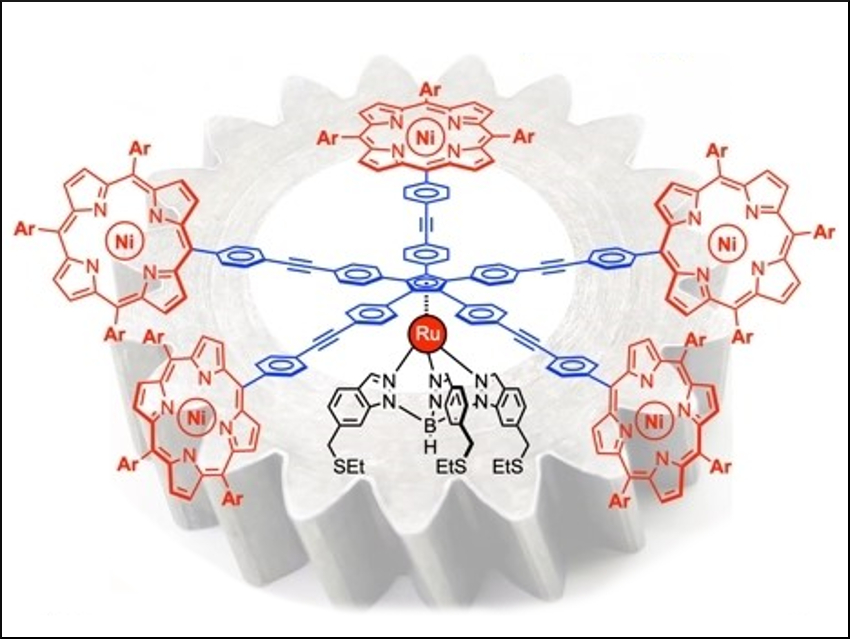Mastering mechanics at the molecular scale is one goal of nanoscience. The motion of molecular “gears”, for example, has been well-studied at the intramolecular level, but the control of intermolecular assemblies of cogwheels still is challenging. This is due to diffusion processes, in particular.
Gwénaël Rapenne, University of Toulouse and International Collaborative Laboratory for Supraphotoactive Systems, Toulouse, France, and Nara Institute of Science and Technology, Japan, and colleagues have synthesized a series of molecular-gear prototypes (example pictured). The team’s aim was to assemble them into trains of gears on surfaces and ultimately achieving a controlled intermolecular gearing motion. The design of the rotary molecular machines is based on a piano-stool-like architecture: a ruthenium center acts like a ball bearing between a pentaarylcyclopentadienyl ligand (pictured in blue) as star-shaped cogwheel and a hydrotris(indazolyl)borate ligand (pictured in black) as a pivot that can be anchored to a surface.
The molecular-gear prototypes, with diameters up to 5 nm, have been synthesized according to a divergent approach to attain high structural diversity for the gear’s “teeth”. These groups range from pseudo-1D aryl groups to large, planar, 2D porphyrinic paddles (pictured in red). The team started from a pentakis(p-bromophenyl)cyclopentadienyl ruthenium(II) complex as a key precursor and used various types of transition-metal-catalyzed cross-couplings to create these complex structures. The resulting compounds undergo free rotation at room temperature, even in the case of the most sterically hindered pentaporphyrin derivatives.
- Star‐Shaped Ruthenium Complexes as Prototypes of Molecular Gears,
Guillaume Erbland, Seifallah Abid, Yohan Gisbert, Nathalie Saffon‐Merceron, Yuichiro Hashimoto, Leonardo Andreoni, Théo Guérin, Claire Kammerer, Gwénaël Rapenne,
Chem. Eur. J. 2019.
https://doi.org/10.1002/chem.201903615




